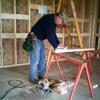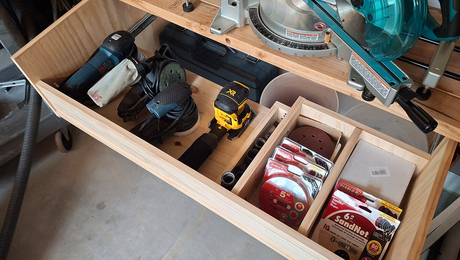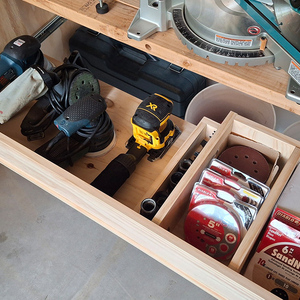We are sheating the outside wall on the basement on Monday, come back Tuesday to white caulk smeared all over the seams and what ever framing is still shownig. The GC call and told us only put wrap around window openings to install windows. The homeowner has decided to caulk all the seams and corners of sheating.
Is this something new? In 15 yrs. never done or heard of this. Home owner moved here from Florida, maybe it’s something they do there. I’m located in south east Iowa.
If new idea please explain.
nailer
Edited 5/14/2008 8:28 am ET by nailerman




















Replies
ship of fools......has arrived from Florida...and found a GC to steer it
I live in MN and would never consider caulking the sheathing seams to be equivalent to a good wrap job. I doubt that it would make code.
But if it meets code I guess you do as the HO says.
Did you actually hear this from the HO? It sound to me like GC is trying to pull a fast one. Put it only around the window because "That's the only part the HO will see".
--------------------------------------------------------
Cheap Tools at MyToolbox.net
See some of my work at AWorkOfWood.com
I caulked all plywood joints, either from outside or inside, to stop air movement. I didn't want to use house wrap like Tyvak. I used 2 layers of 15 lb tar paper, instead. First layer was for protection during construction and second layer because the first layer had deteriorated somewhat. I have vinyl siding. I was working by myself and had heard that tyvak may eventually clog with dust and lose the ability to breathe.
Windows and doors as well as vent penetrations should be further protected with tar paper, stick-on weather shield and/or flashing. These places should not be weatherized with caulk only. Caulk will shield blown-in rain but there must be flashing behind to catch and drain any water that comes in. Go to roofing/siding stores for professionals and get a booklet on siding installation, and read up on how points under windows should be flashed for drainage. You also can check brand name siding website for manuals for same info.
If the HO did the work, it doesn't hurt, and it may be just HO's thinking and HO may not be thinking to replace the wrap. May just be trying to be helpful. I've done this myself when I had to call the professionals. Some were amused and some annoyed but I felt lot better, at least in my mind, for added protection. I make sure not to intrude into their time, work order or cost.
I'm sorry if this sounds like going into preaching, but as a HO, I felt a lot better when I got some explanation from the professionals, especially when behind-the-scenes reasons were explained. Good luck.
You don't say where you live, but in Iowa the wrap is needed to keep out the wind. Caulking won't do the trick. Tar paper won't do the trick.
What is wanted is not the will to believe, but the will to find out, which is the exact opposite. --Bertrand Russell
I wonder about that . House wrap does indeed cut down on wind driven air infiltration. But does it do any better job than a piece of 1/2 sheathing that is caulked to the framing? I have yet to see a piece of solid sheathing allow any wind through it. The infiltration occurs at seams and perimeters. If a solid bead of caulk or glue is run around those spots whats to leak? I would guess, and it is only a guess, that a wall with well sealed pieces of sheathing will outperform a non sealed sheathed wall with house wrap. Be open to hearing why it wouldn't or any data to back up either side of the discussion.
PITA factor and costs not a part of the assessment .
They can't get your Goat if you don't tell them where it is hidden.
How many hundreds of feet need to be caulked?All I know is that when we resided and installed Tyvek it made a world of difference. The sheathing is beaverboard/brownboard, stapled every 6 inches and, to all appearances, very tight. But after we put the Tyvek up the drafts through the outlets stopped, and our dining room was no longer uninhabitable in the middle of winter.
What is wanted is not the will to believe, but the will to find out, which is the exact opposite. --Bertrand Russell
How many ft. to be caulked isn't the issue. I am simply saying that wrapping a caulked or sealed sheathing job probably doesn't add a thing to the prevention of wind infiltration. Also that a caulked or sealed sheathing job may well outperform air barriers.
They can't get your Goat if you don't tell them where it is hidden.
But when you have to caulk several hundred feet, how many gaps will there be? The first fifty feet will be nice and neat, but after that it gets sloppy.And that much caulk isn't free either.
What is wanted is not the will to believe, but the will to find out, which is the exact opposite. --Bertrand Russell
Dan, There have been a lot of houses built that used acoustical caulk along every stud , every plate and at every seam to seal against moisture and vapor penetration. Bogus argument.
They can't get your Goat if you don't tell them where it is hidden.
All I know is that you could look at the sheathing on our house and say there was no way that air could get through (beaverboard is slighly spongy and will seal tighter than plywood when fastened often enough), but still the Tyvek made a world of difference.When you've got the wind blowing from the NW at 25 mph and -20F you want a house to be tightly sealed.
What is wanted is not the will to believe, but the will to find out, which is the exact opposite. --Bertrand Russell
> If a solid bead of caulk or glue is run around those spots whats to leak?
Caulk eventually dries, hardens, and shrinks, so for the long haul, you've just traded big gaps for smaller ones. Good quality glue wouldn't have that problem, but it does have the issue of getting 100% of the joints well glued. It takes a lot of time to do right. The huge advantage of glue -- provided that it's gluing the ply to the two by -- is structural.
-- J.S.
Tyvek etc. have been around a lot less time then caulks and sealants have been. What's to say they don't also deteriorate and cause the same problems. I am not willing to argue the issue of good job vs. bad job unless you are willing to concede that the exact same applies to housewrap installations. That one is an issue no matter what the material used to achieve the end result. But which would be worse, an occasional gap in a sealant for a few inches along a seam or a badly done housewrap job that exposes the whole wall to infiltration. If glues won't holdup why are we all using glue on subfloors? I also am not advocating not using a water barrier. There has to be some water in place on every exterior wall IMO.
They can't get your Goat if you don't tell them where it is hidden.
Glues do hold up for the life of a building. It's only the caulks that generally have to be replaced every few years. That's why using caulks in an inaccessible place isn't such a great idea.
-- J.S.
I believe you are right! Caulked or glued seams would seem to work as well as tyvek.
Not saying I would do this, but see above.
I am not saying I would do it either, but when I think of all the wooden boats I grew up around that were made of plywood, glue and paint I can't believe that it wouldn't work as well or better. Fun test would be to build a wooden box with glued or caulked seams, and another without but covered with Tyvek etc..
Put a compressor to the box and see which hold the air better.
They can't get your Goat if you don't tell them where it is hidden.
Paul Fissette, a FHB contibutor who is a materials specialist at U of Mass or MIT or somewhere down there has studied the house wrap deal alot and profers black felt paper too.
Have a good day
Cliffy
I've had a coulpe of crazy HO's that went around with a caulk gun after i'd left. They thought it would keep (you name it) out.
Actually had a guy caulk an entire hardi install in his shower cause he was sure it was gonna leak everywhere.
Edited 5/14/2008 2:12 pm ET by MSA1
There was a builder round my way (Eastern P.A.) who had a helper caulk all the seems from the inside.
He charged the homeowners for this service anc alled it "Super Sealing". Any kind of housewrap/felt paper was an upcharge from that.
One of my neighbors bought a house from said builder.
When she was telling me about it I said she it was a mistake to allow the house to be sided over bare OSB in our climate.
Coupla years of driving spring rains and winter blizzards and???????
Well, she's got a hell of a moisture/mold and mildew problem.
When I lived/worked in Fla, it was either t-111 or something similar over bare framing or fiberboard siding over paper or wrap.